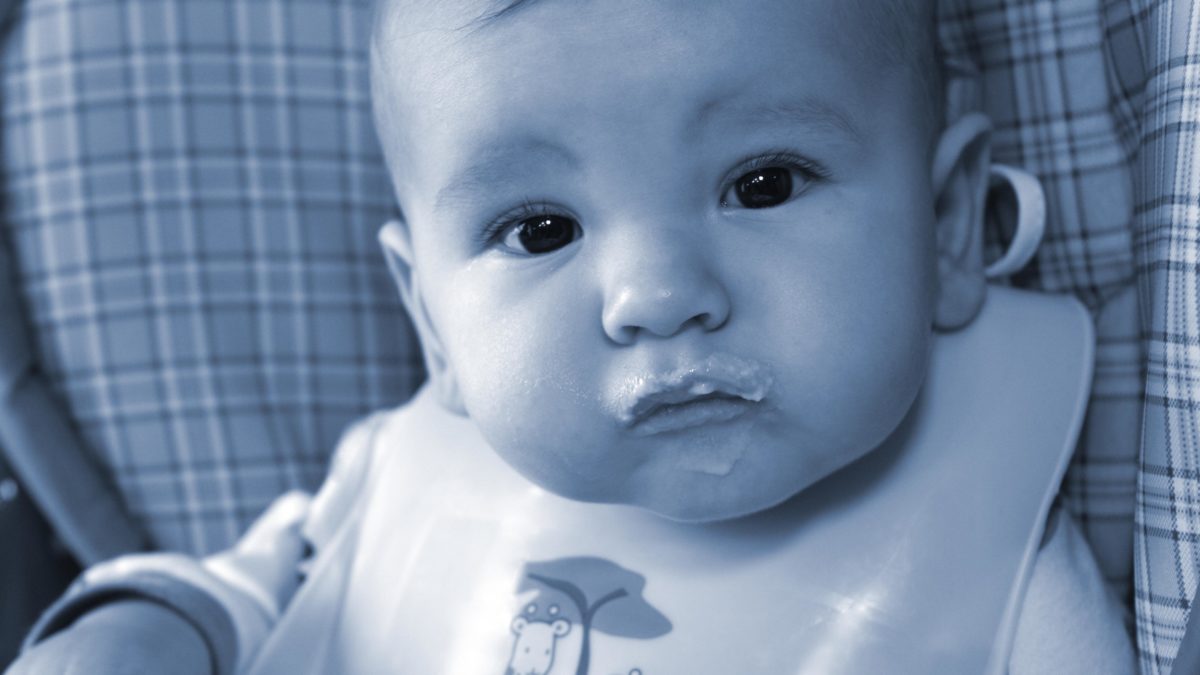Critics: FDA Limit on Arsenic in Rice Cereal Falls Short
In a series of newly published, and in some cases, angry comments, a coalition of doctors, consumer groups, public health advocates, and ordinary parents, accuse federal regulators of leaving American infants exposed to unnecessarily high levels of arsenic from rice products.
“You should be ashamed!” a furious grandmother, identified as Peggie Kordis, told the U.S. Food and Drug Administration in one of more than 20 comments responding to the agency’s announcement in April that it was considering setting a 100 part-per-billion limit on arsenic in infant rice cereal. In making that announcement, the FDA cited increasing evidence that even trace amounts of arsenic could be linked to a variety of health threats, from cancer to cognitive deficits in young children.

How much is too much? The government, consumers, and public health advocates disagree.
Visual: iStock.com
But critics quickly denounced the FDA’s new threshold as too high, and suggested that the agency was going easy on the food industry at the expense of children’s health.
“How many infants and children,” Kordis continued, “have been exposed to arsenic due to the FDA’s negligence?”
Kordis’s angst was echoed by representatives of more than 1,000 families gathered by the Environmental Working Group, a public health advocacy organization, and made public by the federal government this month. These and other responses have been published to the FDA’s web site in batches, and more comments may be forthcoming. “These are our children,” wrote a mother from New York. “Please set strong limits.” Another mother from California added: “We shouldn’t have to beg you to do what’s right for our children. Please get arsenic out of our food.”
The comment period on the agency’s proposed limit closed in July, and officials say they will consider the public response as part of an evaluation of what, if any, limits will ultimately be set. In addition to parent comments, the agency was encouraged to establish a lower limit on acceptable arsenic levels by the American Academy of Pediatrics, Consumer Reports, the staff of the Environmental Working Group, the Healthy Babies Bright Futures initiative, and researchers at the Dartmouth College Department of Epidemiology.
The U.S. Environmental Protection agency sets a safety limit of 10 parts per billion for arsenic in water, but there is currently no official limit on trace arsenic in food. Many commenters expressed support for the FDA’s decision to set a limit at all, but agreed with the Environmental Working Group’s statement that “the proposed action on rice cereal does not provide a meaningful public benefit.”
Healthy Babies Bright Futures, an organization comprised of scientists, nonprofit organizations and donors working to reduce childhood exposures to neurotoxic chemicals, expressed real concern that the FDA was being too accommodating to the food industry, setting a standard so high that almost no action would be needed. “You give the impression that you have set an action level based on what you believe industry can easily achieve, not on what would adequately protect children’s health,” the organization wrote.
On the other hand, the trade association of the American rice industry, USA Rice, wrote to suggest that the agency was overreacting to an uncertain risk. “The presence of arsenic in rice is not at issue,” the association wrote. “What is at issue is what, if anything, needs to and can be done about it.”
Arsenic is a naturally occurring element found in rock, soil and water around the planet. Many plants contain some levels of arsenic, but health officials have increasingly focused on rice because it appears to be uniquely well engineered to transport arsenic out of soil and water and to store it in the grain.
In its comment, the public health advocacy group, Consumer Reports, noted that it had been tracking arsenic in rice for more than four years and found that a more toxic form of the element had been found not only in infant cereals, but many rice-based breakfast cereals. The agency should widen its protective net, the group argued, to include “young children (age one to six) — who are vulnerable to the effects of arsenic and who eat more relative to body weight than adults — by setting limits on rice products, on ready-to-eat cereals, as well as on other rice products such as hot cereals, rice pastas, crackers, cakes, and drinks.”
FDA spokeswoman Lauren Sucher said that while the agency plans to finalize the standards after reviewing the comments, it has not set a deadline for this. “We cannot offer a timeframe for future policy or regulatory action,” she said, emphasizing that the FDA would pay serious attention to all responses. In the meantime, the agency continues to recommend that in advance of any further action, parents should limit rice in their children’s diets, and feed them a variety of grains.
In a telephone interview, Dr. Jennifer Lowry, head of the Council of Environmental Health for the American Academy of Pediatrics, said that is now routine advice from pediatricians. Studies have shown, she said, that it’s better for the development of the gastrointestinal tract to feed children a varied diet.
“But we’d like the FDA to move faster on this,” she said. “We’ve been talking to them about it for years. And we’d like them to do a better job of keeping parents informed about why this is important. How can people make good decisions about what to eat if the government doesn’t share this information?”










